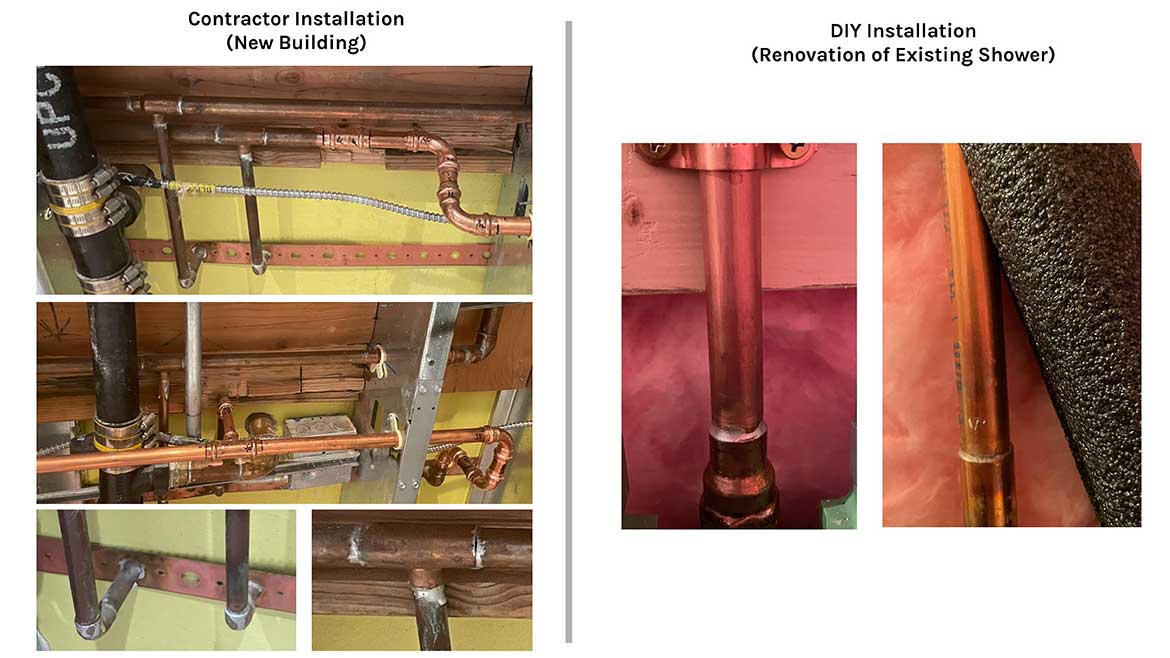"Quality is never an accident; it is always the result of high intention, sincere effort, intelligent direction and skillful execution; it represents the wise choice of many alternatives." This is a quote attributed to a U.S. Marine whose life ended after he jumped on a grenade to protect a fellow marine during the battle of Okinawa.
"Quality means doing it right when no one is looking," was a saying attributed to Henry Ford.
I have heard on multiple occasions about the plumbing industry's decline in quality. How about remarks that "Engineers and designers do not know how systems are installed so their designs don't work?" What is driving this, and could it be because of the pressure to install or design it as cheap as possible to be on budget? I would like to mention also one of my favorite quality quotes attributed to Benjamin Franklin: "The bitterness of poor quality remains long after the sweetness of low price is forgotten."
I do not fully agree with the statement above about the quality decline in our industry. A couple of bad installations do not define the entire plumbing contractor industry. How do we fix it? An engineer or contractor alone cannot fix this. The key is that the entire team (design through construction) must have an understanding at the beginning of the project that it is everyone's responsibility to deliver a quality product to the client.
For engineers and designers specifically, this means we need to be vigilant and flag potential problems or identify when quality is questionable. Understanding this intent, contractors should not be offended and assume that the design team is attacking them when items are identified. Conversely, contractors need to make the engineers and designers aware of difficulties regarding system configurations or sizing due to field conditions, prior experience, etc. Similarly understanding the intent, engineers and designers should capitalize on this insight as an opportunity to improve designs and not feel challenged by contractors.
I've included a couple of examples below to highlight this.
Example 1: "Nothing's wrong with this installation."
The quality is just not there. To make it worse, when the engineer flagged this condition, they received an aggressive response from the contractor saying, "There is nothing wrong with it."
I wanted to be fair and have a better understanding of the difficulties the contractor faces due to field conditions. I decided to demo my existing bathroom and replace the shower mixing valve myself. I quickly found out that soldering the piping near the wall is particularly challenging. Note: I am opening myself up on this by highlighting my soldering skills or lack thereof. I am not a professional installer, so I welcome any feedback if there's something I did wrong. Now going back to the installation example above, this was done in a brand-new building so there is no wall to start with, but the final installation is not good compared to my own "DIY" soldering project.

Click on image to enlarge.
The installation caused me to speculate as to the reason for these differences. Were press fittings used, then soldered, then changed back to press fittings? Some sections of the pipes also appeared old, could that be a factor? Was the use of too much flux causing problems down the road that increased the potential for corrosion? Is there a concern of too much flux inside the pipe and increased restriction or turbulence?
Perhaps I am being too meticulous, but this is something that we need to flag. I have also seen many piping installations that look like a work of art, with piping being installed so carefully and so neatly that it is a shame no one will see hidden inside the wall.
Example 2: "The water heater is faulty. I have been doing this for so many years — I have installed hundreds of these and piped them all the same, and it always worked."
The faucet is only getting cold water. Instead of troubleshooting, the contractor immediately put blame on the water heater. The contractor's response was to blame the water heater based solely on their years of experience in installing hundreds of similar installations. The engineer tried to explain the observations but was dismissed immediately by the installer.
While we cannot ignore experience, the question is if we are keeping up with technology? Are we applying the same logic to a new product that may require a different installation?
Piping installations for point-of-use (POU) water heaters vary. Are we using the POU water heater model with or without the integrated mixing valve? What type of faucets are connected to this? Manual or automatic? If automatic, is it a single "tepid" water supply or a faucet with adjustable hot and cold-water supply? Is the mixing valve integral to the faucet? The answer to these questions will influence how the associated piping needs to be configured.
Working together is our best pathway to success and to deliver a quality product to the client that can be maintained and sustained for years to come.
The above are couple of examples of what plumbing engineers and designers see on their projects and have nothing to do with cost savings. A few installations do not define our industry and most projects go smoothly. The key is that at the very beginning of the project, all parties understand that this is a team effort and do their part to ensure that goals are aligned.
Each one of us has a role in delivering a quality system to the client. Despite how good or innovative new technology may be, if installed incorrectly it will not function as intended. Conversely if we do not understand the lessons of years of experience in the field, simply providing new technology may not resolve operational issues either. Working together is our best pathway to success and to deliver a quality product to the client that can be maintained and sustained for years to come.
Since I started with a quote, I will end with a quote; "Perfection is not attainable. But if we chase perfection, we can catch excellence." – Vince Lombardi.




